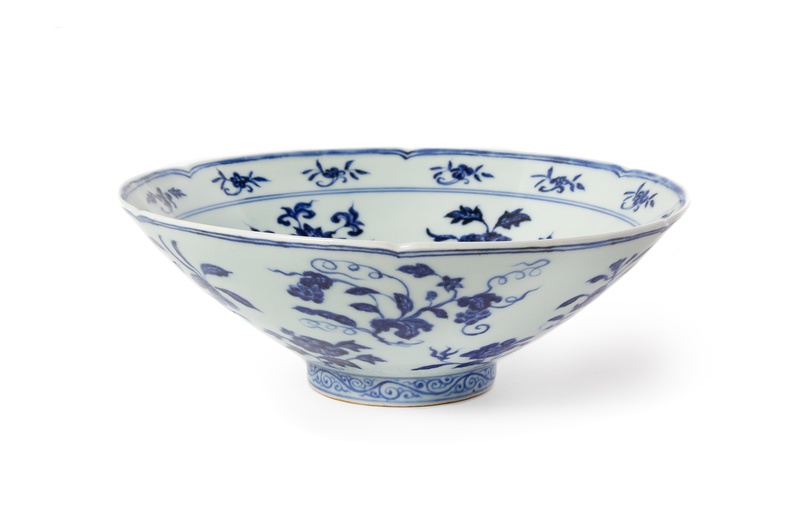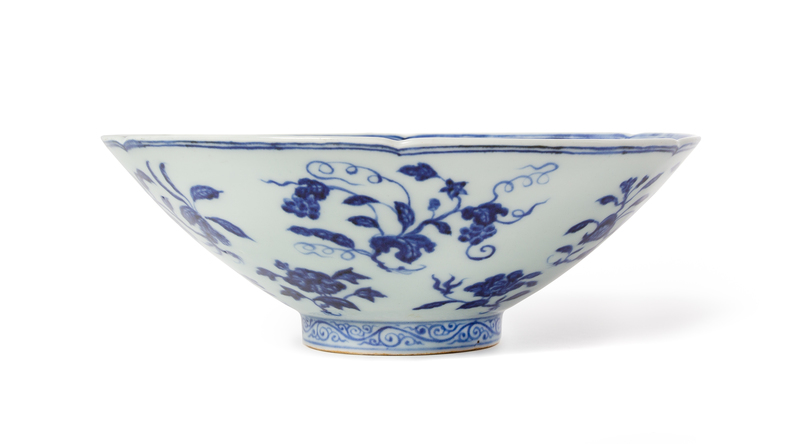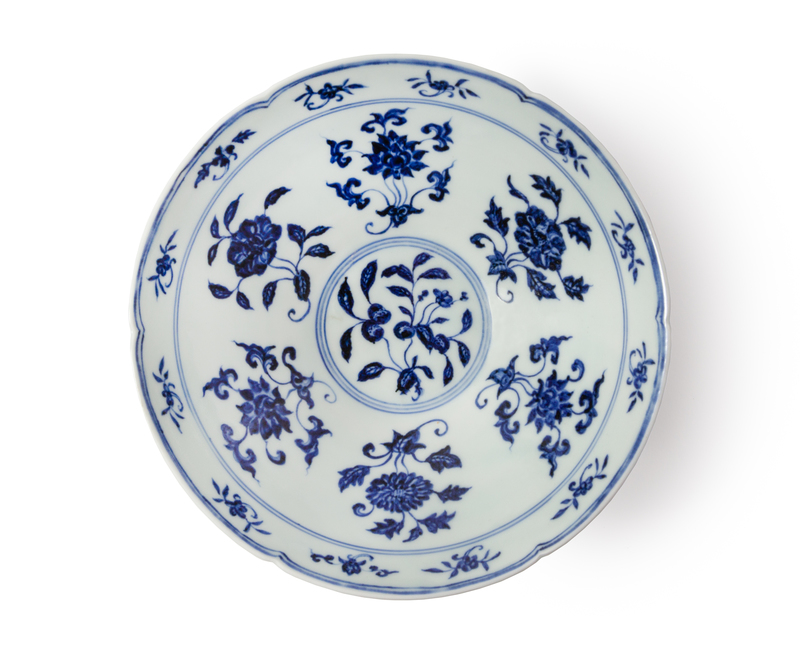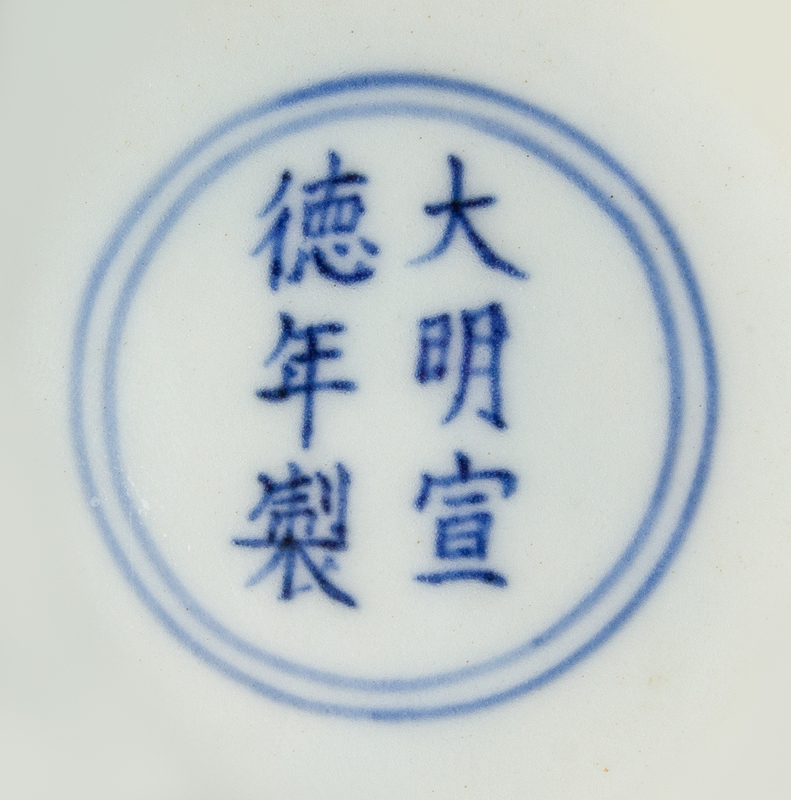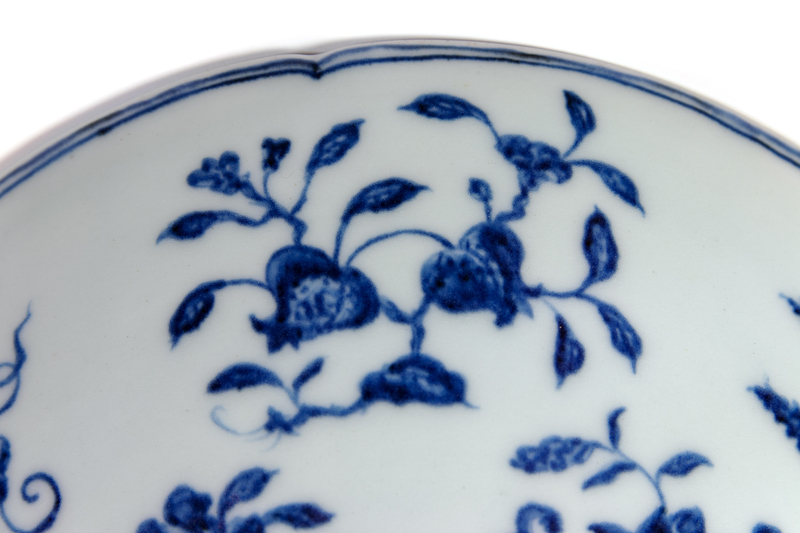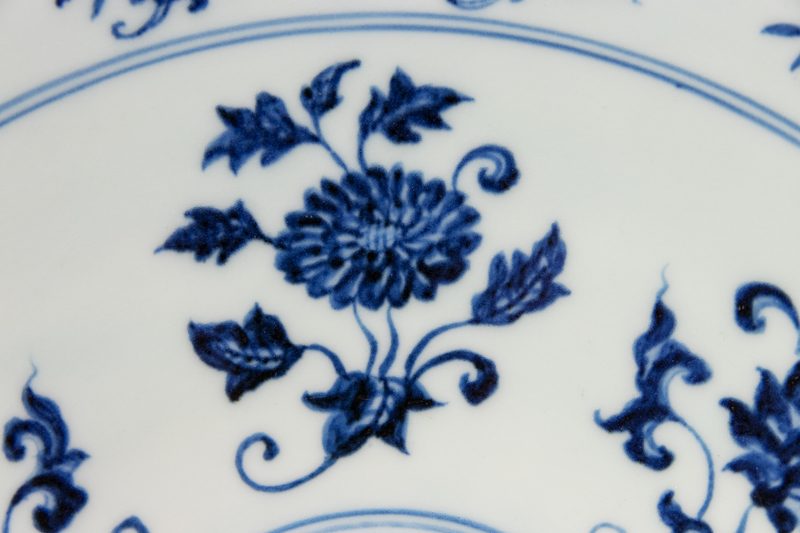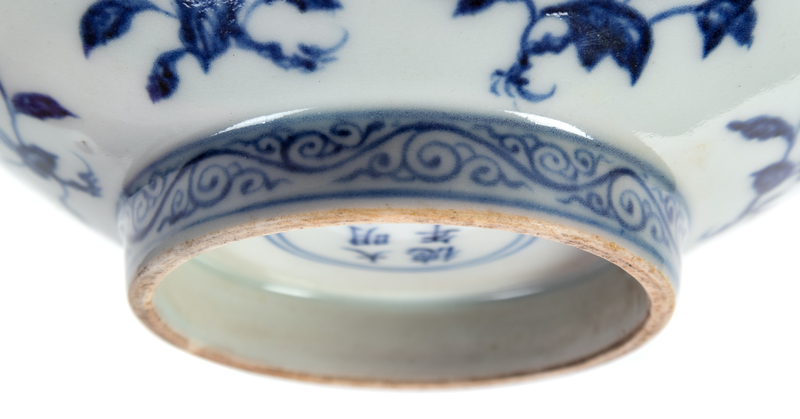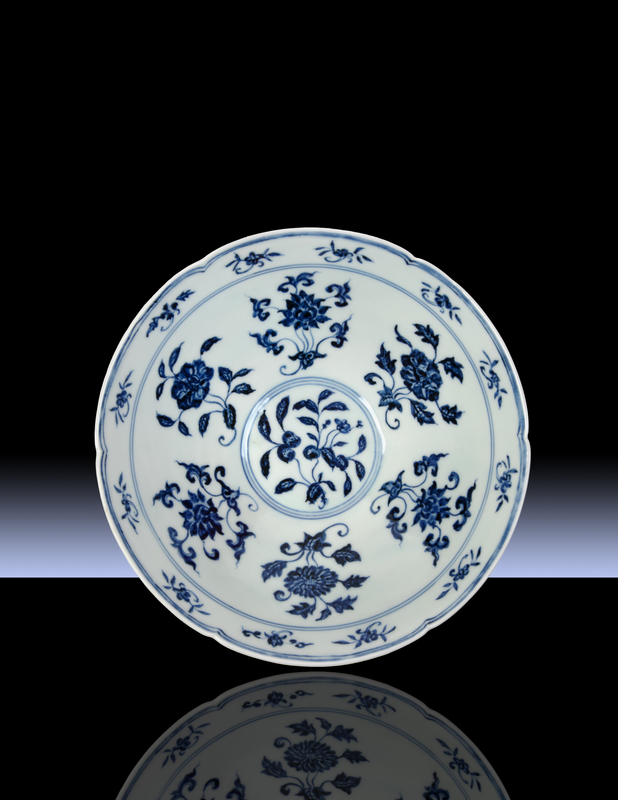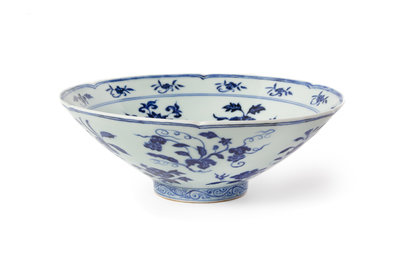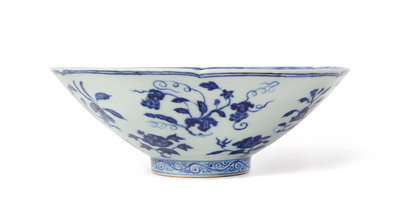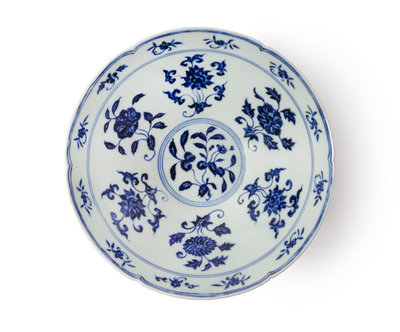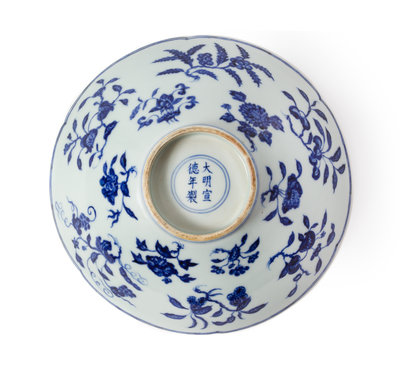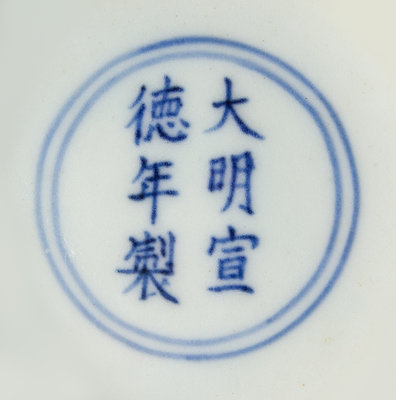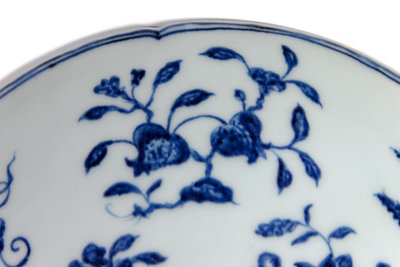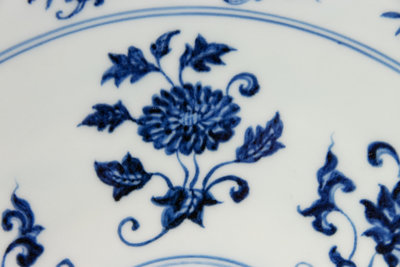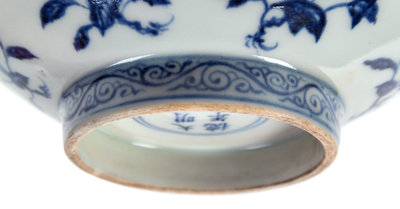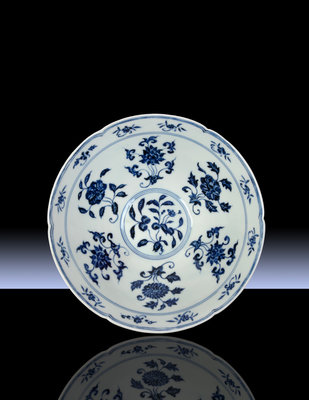Condition Report
Contact Information
Lot 255
A Rare Blue and White Porcelain Hexafoil Bowl
XUANDE MARK AND PERIOD (1426-1435)
Diameter 8 7/8 inches.
Sale 581 - Asian Works of Art
Sep 17, 2018
10:00AM CT
Live / Chicago
Own a similar item?
Estimate
UPON REQUEST
Price Realized
$1,452,500
Sold prices are inclusive of Buyer’s Premium
Lot Description
A Rare Blue and White Porcelain Hexafoil Bowl
XUANDE MARK AND PERIOD (1426-1435)
having a lobed mouth rim, the sloping walls raised on a short straight foot, the interior and the exterior painted with fruit and flower branches, the underside incised with a Xuande six-character mark in underglaze blue.
Diameter 8 7/8 inches.
